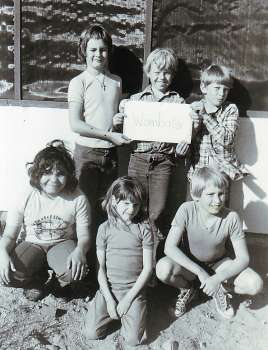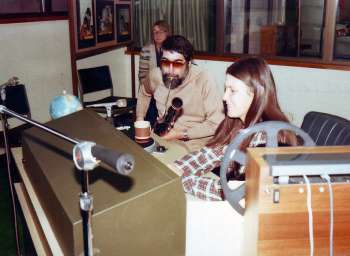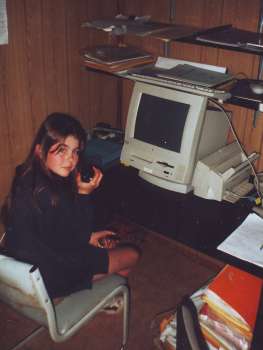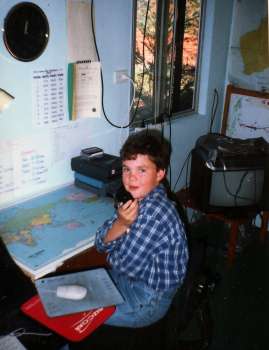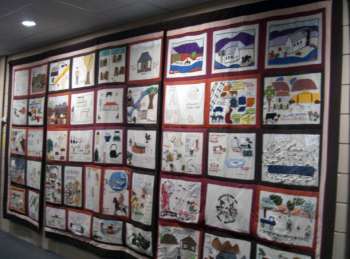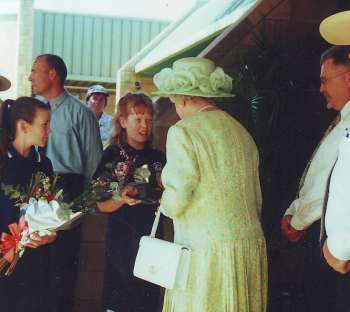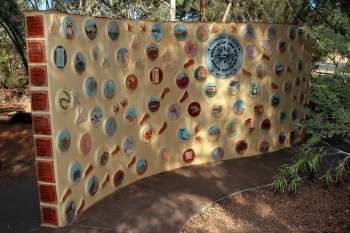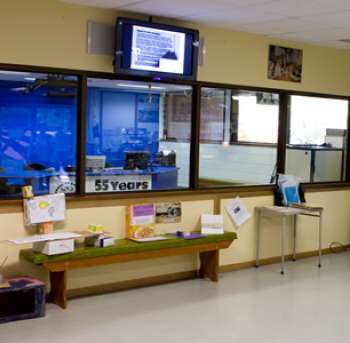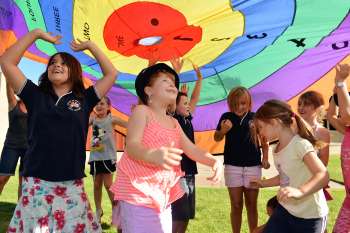An idea turns into a legacy
Outback families owe much to the invention of the pedal radio by Alfred Traeger in 1929. Not only did this new technology bring life-saving
services like the Royal Flying Doctor but it helped families feel less isolated and more connected to each other and their family, friends
and colleagues living in towns and cities.
A visit to Alice Springs in 1944 by Miss Adelaide Miethke, a member of the Flying Doctor Service of South Australia, saw an idea hatch. On a
visit to a remote cattle station, she recognised the difficulties outback families were facing with correspondence lessons and that children
were lacking social contact with their peers. It occurred to her that the radio technology used by the Flying Doctors could help by
enabling teachers to give lessons over the radio.
Miss Miethke suggested the idea and together with the Flying Doctor Service, the Northern Territory Education Department and Alice Springs
Higher Primary School, set in motion the School of the Air in Alice Springs - the first of its kind in the world.
Special communications equipment had to be sent to remote families and permissions sought, but after a long wait a trial began in 1950. A
landline was laid from the Flying Doctor base in Alice Springs to the Alice Springs Higher Primary School and teachers volunteered their
time to teach the radio lessons. With fun and laughter, teachers took turns to present specially prepared scripts to Outback children with
the help of radio staff and the Flying Doctor base.
Visit us at Alice Springs
School of the Air Experience to learn more
Visit us at Alice Springs
School of the Air Experience to learn more


 On 8th June the School of the Air was officially opened at the Flying Doctor
Base. Mr. Kissell of the Alice Springs Primary Higher School is the leader of the
broadcasting team. At first lessons are a one-way affair, but soon a question and
answer time was added to the end of each broadcast. Sometimes a microphone
was taken into one of the classrooms at the school and the outback children could
listen in to specially prepared lessons or dramatisations. Three half-hour sessions
were broadcast each week.
On 8th June the School of the Air was officially opened at the Flying Doctor
Base. Mr. Kissell of the Alice Springs Primary Higher School is the leader of the
broadcasting team. At first lessons are a one-way affair, but soon a question and
answer time was added to the end of each broadcast. Sometimes a microphone
was taken into one of the classrooms at the school and the outback children could
listen in to specially prepared lessons or dramatisations. Three half-hour sessions
were broadcast each week.
 Miss Molly Ferguson takes over as leader of the broadcasting team
Miss Molly Ferguson takes over as leader of the broadcasting team
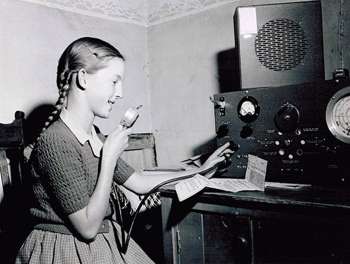 The School of the Air now operates from the current Anzac Hill High School
site in a purpose built broadcast studio with an observation area. Miss Molly
Ferguson becomes the sole teacher for School of the Air.
The School of the Air now operates from the current Anzac Hill High School
site in a purpose built broadcast studio with an observation area. Miss Molly
Ferguson becomes the sole teacher for School of the Air.
 The first “get-together” week is held in May with 30 children attending aged
from 5-15 years. The Get-Together is held at the Alice Springs Higher Primary
School during the school holiday break. Miss Molly Ferguson is awarded the MBE
for her work at School of the Air. She retires to get married.
The first “get-together” week is held in May with 30 children attending aged
from 5-15 years. The Get-Together is held at the Alice Springs Higher Primary
School during the school holiday break. Miss Molly Ferguson is awarded the MBE
for her work at School of the Air. She retires to get married.


 Mr David Ashton becomes the School of the Air teacher. He goes on patrol
four times a year for 1-2 weeks each time
Mr David Ashton becomes the School of the Air teacher. He goes on patrol
four times a year for 1-2 weeks each time





